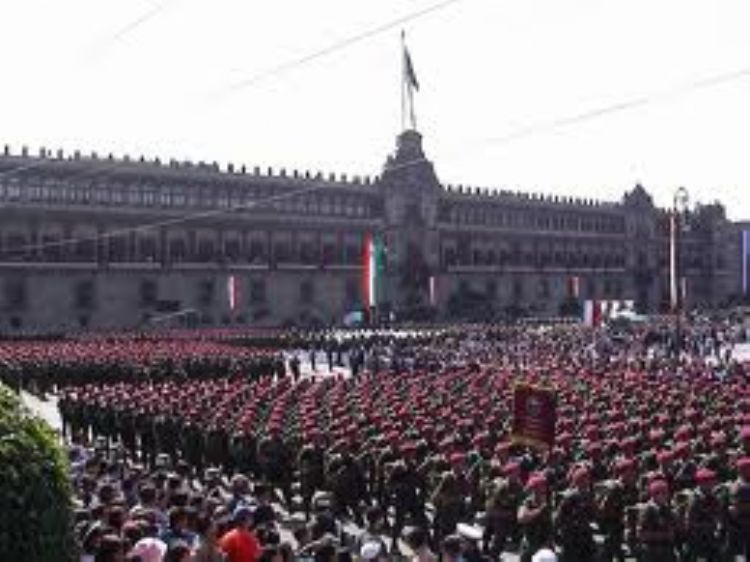
The Popular Revolutionary Army (EPR for its initials in S...

The great Mesoamerican civilization extended from the Sinaloa river on the western side of Mexico all the way to the Central American nation of Nicaragua, roughly a surface of a million square kilometers. The legacy of the first Mesoamerican inhabitants in the current territory of the state of Nayarit consists of marine shells, stone artifacts, as well as graves and remains of residences as ancient as 7,000 years old.
Many of these pre-Hispanic groups turned sedentary as they discovered agriculture. Nevertheless, during the period of 700 B.C. and 400 B.C., a particular kind of grave was profusely built within the Nayarit region, a type also found in Panama, Colombia and Ecuador, which suggests a cultural interchange between the pre-Columbian cultures, perhaps along the Pacific Ocean.
For many years, the cultural development in the Mexican west during the period known as the Post-Classical was believed to be reduced to groups of small villages led by chiefs or caciques, and usually confronting one another. However, recent research indicates this erroneous conception originates in a lack of sufficient archeological exploration, as new sites have been uncovered in the region, including fortifications as well as mines and large towns.
When the European invaders reached Nayarit land, its people had neither been submitted by the empire of Michoacan also called Tarasco, nor by the Azatecs or Mexicas. By then, two large urban settlements dominated most of the valleys, Xalisco and Aztatlan. The mountain ranges, on the other hand, were occupied by many other groups, the largest of which were the Coras and Huicholes, followed by the Tecos, Torames, Tepehuanes and Huaynamotas.
The year 1524 brings the arrival of Francisco Cortez, cousin of Mexican conqueror Hernan, with the intention of establishing a link and relationship with the two major local groups, which in fact welcomed him unconditionally. Sadly, the respectful and moderate behavior of Cortez was eclipsed by the brutality shown by Nuno de Guzman, who, heading a large troop formed by Mexicas and Tarascos natives, caused devastation throughout the Nayarit and Jalisco valleys and coasts, spreading terror, looting and burning all whatever came in their way, a situation that relatively improved with the intervention of the missionaries from the Franciscan order.
The first city founded in this territory then known as the Nueva Galicia was that of Compostela, now Tepic. Development reached the area at the XVII century in the shape of roads and bridges, and gold and silver mines attracted many dwellers to the region, which in turn resulted in the founding of new cities. Cattle raising was one of the major activities in the Nayarit valleys during colonial times, which brought about the development of numerous Haciendas and large ranches.
Meanwhile, the indigenous population located on the mountain ranges managed to keep their freedom for some 200 years after the Spanish arrived to the region. Some of the Franciscan missionaries achieved the voluntary decision of groups of natives to actually come down from the valleys and join the new way of life. However, the constant attacks to the cities in the hands of the Chimicheca tribes forced the Spanish authorities to take total and final control of the Nayarit sierras around 1616, process that was fortunately not as inhuman and bloody as the one triggered by Guzman.
By the end of XVIII and beginning of the XIX centuries, the Jesuit missions, economic growth resulting from the successful sugar cane plantations, and the operation of the San Blas port, improved the prospects for the cities in the state.
Mexican independence was received in Nayarit with excitement in 1810, and some insurgent citizens, under the command of priest Mercado, decided to take hold of the San Blas port, in fact achieving their goal with amazing speed and efficiency, only to suffer later setbacks as a result of the betrayal and arrival of the Realist army.
Eventually, as Mexico achieved its independence, the Union Congress separated Nayarit from Jalisco in the year 1824.
During the dictatorship known as the Porfiriato, the coverage and quality of education improved considerably in the state, and the quality of life in general saw great progress with the coming about of modernity and conveniences such as electric power, running water and fuel oil, among other advances. Regretfully, the Nayarit society could not fully enjoy the kind of development that the railroad would propel in their region for many years to come, much later than the majority of the Mexican states.
Once the Mexican Revolution came to an end, the Agrarian Reform took shape across the country in 1926, but for some reason the disappearance of the large estates known as Latifundios and the new system for the distribution of land did not reach the Nayarit territory until the year 1933.
It was not until the year 1945 that the rural population of Nayarit experienced a true social and economic transformation with a revolution to the transportation sector, as population began to grow at a pace never seen before with the building of the strategic road along the path Guadalajara-Tepic-Mazatlan-Nogales.



During 2010 we celebrated in México 200 years of I...